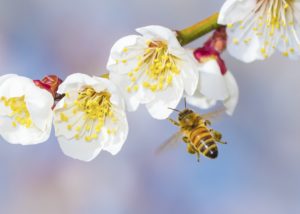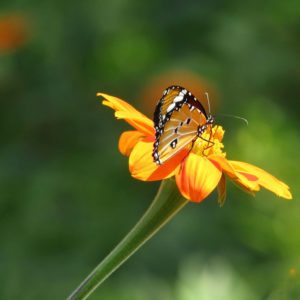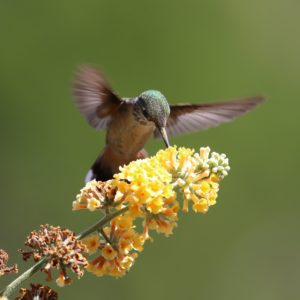
This past Saturday (June 20) marked the official start to summer, and what better way to welcome in the new season than National Pollinator Week? This is the time of year that we really get to enjoy the bounties of fresh produce and beautiful flowers, and are reminded of just how essential pollinators are to our planet.
According to our friends over at Pollinator Partnership, approximately 75% of flowering plants need pollination help from animals (and, yes, we said animals). While we typically think of beneficial insects (bees, wasps, beetles, moths, and butterflies) as pollinators, around 1,000 of all pollinators are actually vertebrates, including birds, bats, and other small mammals, like lemurs. The combined efforts of these pollinators generate nearly $20 billion worth of products for the U.S. annually – incredible!
In years past we have highlighted the contributions of honey bees to pollination (and you can check out that blog post for sweet ways to celebrate), this year we wanted to take some time to shine a light on some of the other important pollinators that make our world go round.

Butterflies: Probably one of the public’s favorite pollinators, butterflies are as important as they are pretty. According to the National Forest Service, with their long legs, butterflies don’t collect as much pollen as their hairier bee counterparts, but they are still essential to the pollination of many vegetables, herbs, and legumes like celery, artichokes, lettuce, peas, lavender, cilantro, and chamomile just to name a few.
Bats: These heroes of the night are said to pollinate more than 500 species of plants, including many night-blooming species and tropical fruits such as bananas, guavas, cashews, and peaches. And we raise our glasses high to this pollinator, as bats also help in the pollination of agave.
Beetles: When thinking about pollinators, beetles don’t always jump to the top of the list, but it is said that beetles have been pollinating plants for millions of years. These mighty creatures are essential pollinators of macadamia nuts, pawpaws, and other crops.

Birds: There are few better sounds in the morning than the pleasant chirping of neighborhood birds, and as they fly about, they too participate in pollination work, benefitting bananas, papayas, and nutmeg, just to name a few.
Other Insects: Did you know that non-bee insects are responsible for approximately 38% of the pollination of 17 major crops? Here are just a few:
- Hoverflies: orchards
- Moths: tropical crops such as cashews and papayas (they also compete with bats for those lovely night bloomers)
- Wasps: figs (Did you know there is a species of wasp known specifically as the fig wasp?)
- Midges: chocolate
You can learn more about these pollinators and get tips on how to draw them to your garden in this article on Modern Farmer.
For all they do to keep our world and our plates beautiful, fresh, and diverse, it’s no wonder that pollinators have their very own week. What started just over 13 years ago as a way to bring attention to the decline in our pollinators has grown into a national movement with events celebrated throughout the country. While things will look a little different this year, we still encourage you to check out our friends at Pollinator Partnership for tips on how to celebrate.
We want to hear from you! How are you celebrating pollinators this week? Tell us about it in the comments below.
